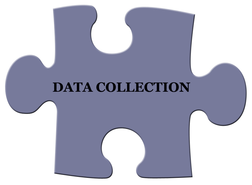Below is a list of what each procedure is used for:
- Event Recording is a tally or count of behaviors as they occur. Behaviors measured using event recording should be ones that occur for short periods of time, such as raising one’s hand, rather than for extended periods, such as reading or playing.
- Frequency recording is a simple counting of how many times a behavior occurs during a designated period of time. To calculate the frequency of the event, the number of occurrences of the event within a fixed time interval are counted, and then divided by the length of the time interval. To use, a target behavior should have a definite, observable beginning and ending and should not occur at high rates.
- Latency Recording is the measurement of the length of elapsed time between the onset of a stimulus and the occurrence of a behavior. Latency recording is typically used when we want to decrease the amount of time it takes for a student to respond to an instruction or other stimulus, such as time it takes to get started on an assignment following a direction or to give a verbal response following a question.
- Interval Recording is used to measure the presence or absence of behavior within specific time intervals. The observation period is divided into equal time periods, such as 5 minute intervals. There are two kinds: Partial-interval recording and Whole-interval recording.
- Partial-Interval Recording: Records whether the behavior was present or absent at any time during the interval (not concerned with how many times the behavior occurred). A data sheet divided into the appropriate intervals is used to record occurrences of the behavior.
- Whole-Interval Recording: The behavior is only recorded if it is present throughout the entire interval. This procedure tends to produce a slight underestimate of the presence of the target behavior and should be used when the goal is to produce an increase in behavior.
- Momentary Time Sampling records the presence or absence of behaviors immediately following specified time intervals. This is sometimes easier for teachers to use as observation takes place only momentarily at set intervals. For example, every 15 minutes the teacher may look to see if a student (s) is on task.
- Duration Recording: When it is important to know how long a behavior occurs, either to target an increase or decrease in behavior, duration recording can also be used.
- A-B-C Recording During direct observation, the operationally defined target behavior is recorded along with the antecedent (stimulus that preceded/ triggered the behavior) and consequence that followed/was the result of the behavior.
- Keller, D. (2006, December). FAST FACTS ON DATA COLLECTION VIA DIRECT
MEASUREMENTS OF BEHAVIOR. Retrieved from
https://brandman.blackboard.com/bbcswebdav/pid-9582336-dt-content-rid-185186

Bria Lee, Student Support Assistant


 RSS Feed
RSS Feed